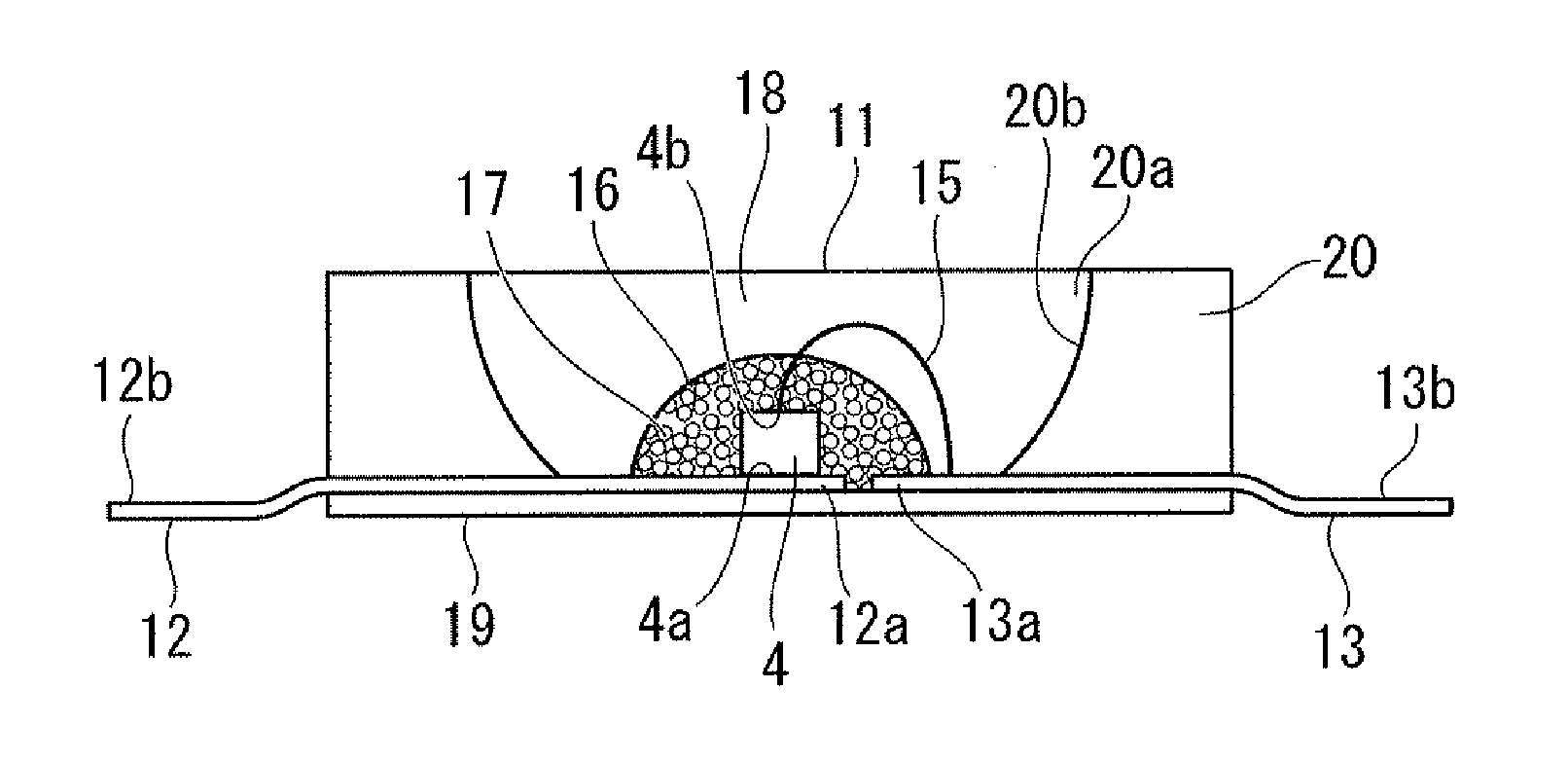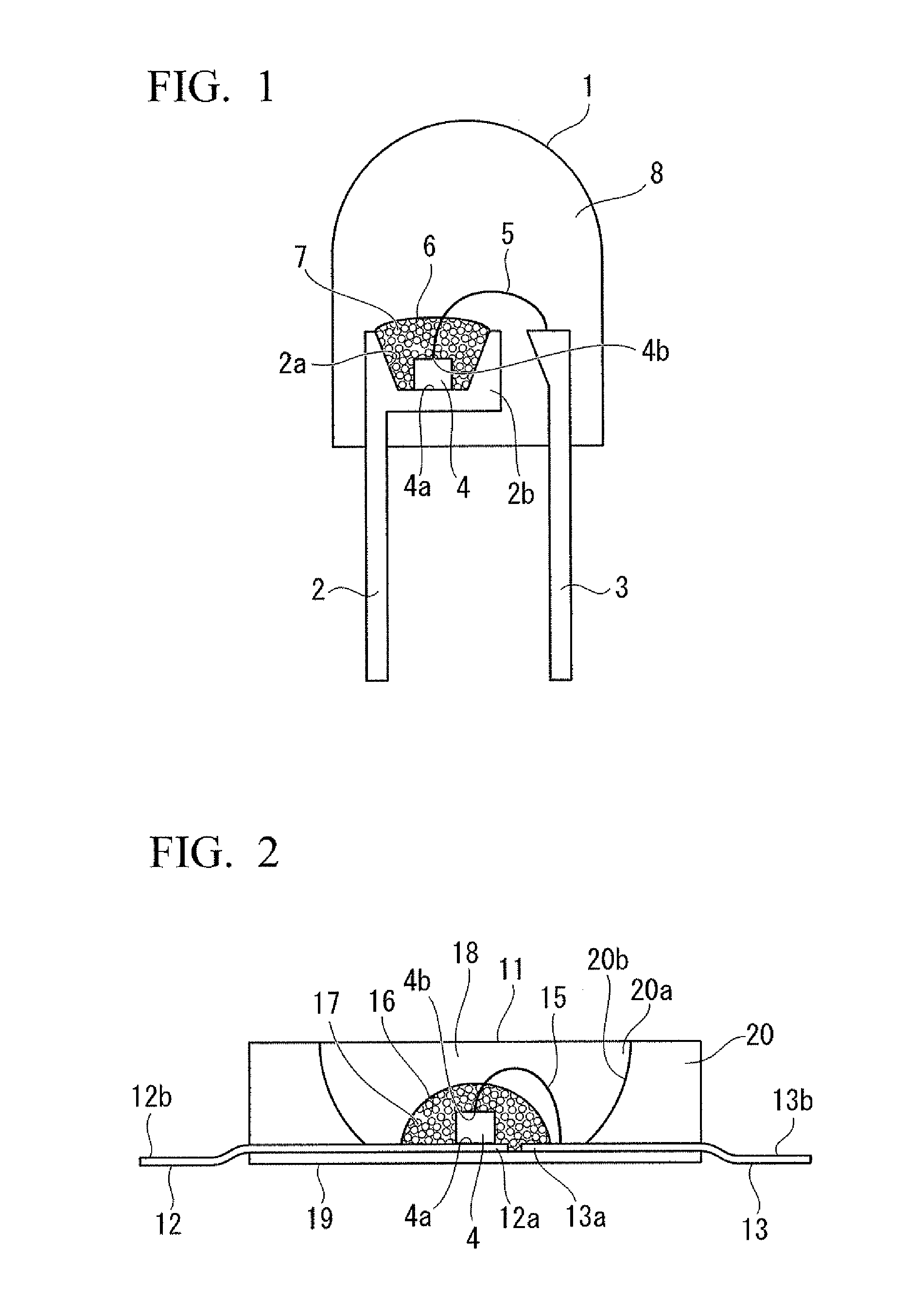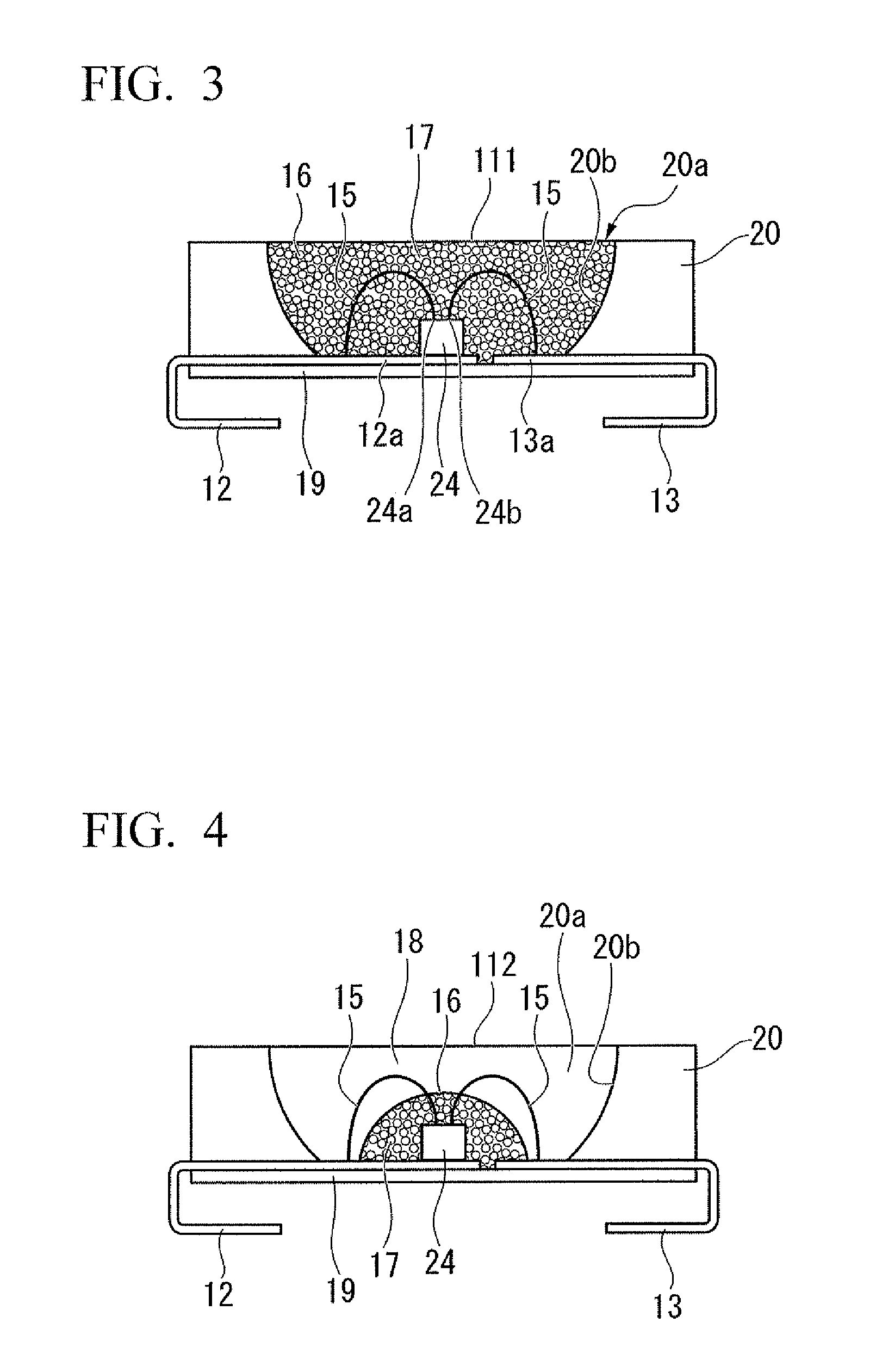Phosphor, method for producing the same and light-emitting device using the same
a technology of phosphor and light-emitting device, applied in the field of phosphor, can solve the problems of color rendering becoming ununiform, light emission brightness impairment, and impaired brightness of phosphor, and achieve excellent stability, high light emission intensity, and high brightness
- Summary
- Abstract
- Description
- Claims
- Application Information
AI Technical Summary
Benefits of technology
Problems solved by technology
Method used
Image
Examples
first embodiment
[0254]As a first embodiment of the light-emitting device according to the invention, a round-type white light emitting diode lamp (i.e., a LED lighting device or a LED device) will be described.
[0255]FIG. 1 is a cross-sectional view of a round-type white light emitting diode lamp 1 which is the first embodiment of the light-emitting device according to the invention.
[0256]As illustrated in FIG. 1, the round-type white light emitting diode lamp 1 includes a first lead wire 2 and a second lead wire 3. The first lead wire 2 includes a recess 2a, in which a light emitting diode device (i.e., a LED chip) 4 is placed. A lower electrode 4a of the light emitting diode device 4 is electrically connected to a bottom surface of the recess 2a with conductive paste. An upper electrode 4b of the light emitting diode device 4 is electrically connected to a second lead wire 3 by a bonding wire (i.e., a fine gold wire) 5.
[0257]A first resin (i.e., sealing resin) 6 is a transparent resin in which a p...
second embodiment
[0263]As a second embodiment of the light-emitting device according to the invention, a chip-type white light emitting diode lamp (i.e., a LED lighting device or a LED device) will be described.
[0264]FIG. 2 is a cross-sectional view of a chip-type white light emitting diode lamp 11 which is the second embodiment of the light-emitting device according to the invention.
[0265]As illustrated in FIG. 2, in the chip-type white light emitting diode lamp 11, a first lead wire 12 and a second lead wire 13 are fixed to a ceramic substrate 19, which is made of alumina ceramic having a high light reflectance. A first end 12a of the first lead wire 12 and a first end 13a of the second lead wire 13 are positioned at a substantially central portion of the substrate 19. A second end 12b of the first lead wire 12 and a second end 13b of the second lead wire 13 are drawn out of the substrate 19 to form electrodes to be soldered when the substrate 19 is mounted on an electric substrate. A light emitti...
third embodiment
[0272]As a second embodiment of the light emitting device according to the invention, a chip-type white light emitting diode lamp for mounting a substrate (i.e., a LED lighting device or a LED device) will be described.
[0273]FIG. 3 is a cross-sectional view of a chip-type white light emitting diode lamp 111 for mounting a substrate which is the third embodiment of the light-emitting device according to the invention.
[0274]As illustrated in FIG. 3, in the chip-type white light emitting diode lamp 111, a first lead wire 12 and a second lead wire 13 are fixed to a ceramic substrate 19, which is made of alumina ceramic having high light reflectance. A first end 12a of the first lead wire 12 and a first end 13a of the second lead wire 13 are positioned at a substantially central portion of the substrate 19. Another end 12b of the first lead wire 12 and another end 13b of the second lead wire 13 are drawn out of the substrate 19 to form electrodes to be soldered when the substrate 19 is m...
PUM
 Login to View More
Login to View More Abstract
Description
Claims
Application Information
 Login to View More
Login to View More - R&D
- Intellectual Property
- Life Sciences
- Materials
- Tech Scout
- Unparalleled Data Quality
- Higher Quality Content
- 60% Fewer Hallucinations
Browse by: Latest US Patents, China's latest patents, Technical Efficacy Thesaurus, Application Domain, Technology Topic, Popular Technical Reports.
© 2025 PatSnap. All rights reserved.Legal|Privacy policy|Modern Slavery Act Transparency Statement|Sitemap|About US| Contact US: help@patsnap.com



